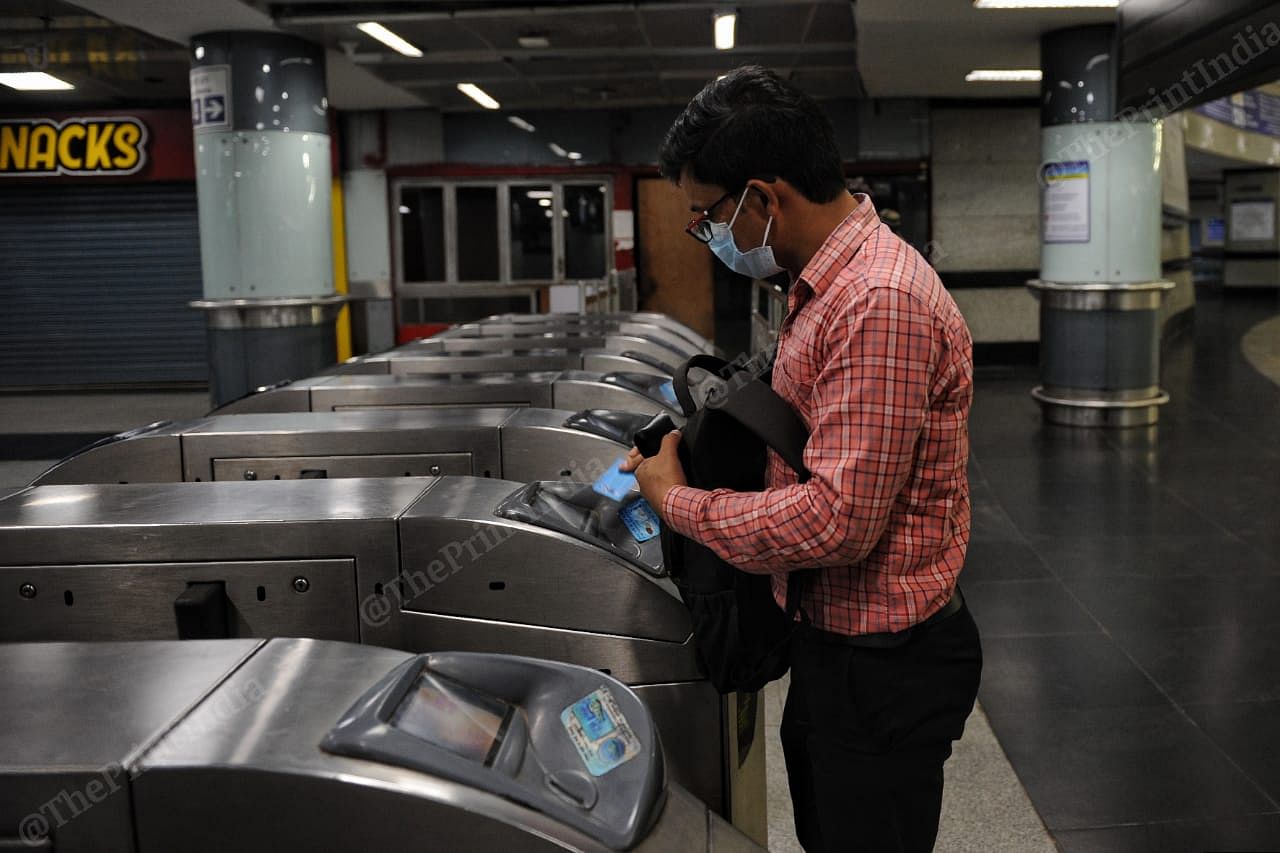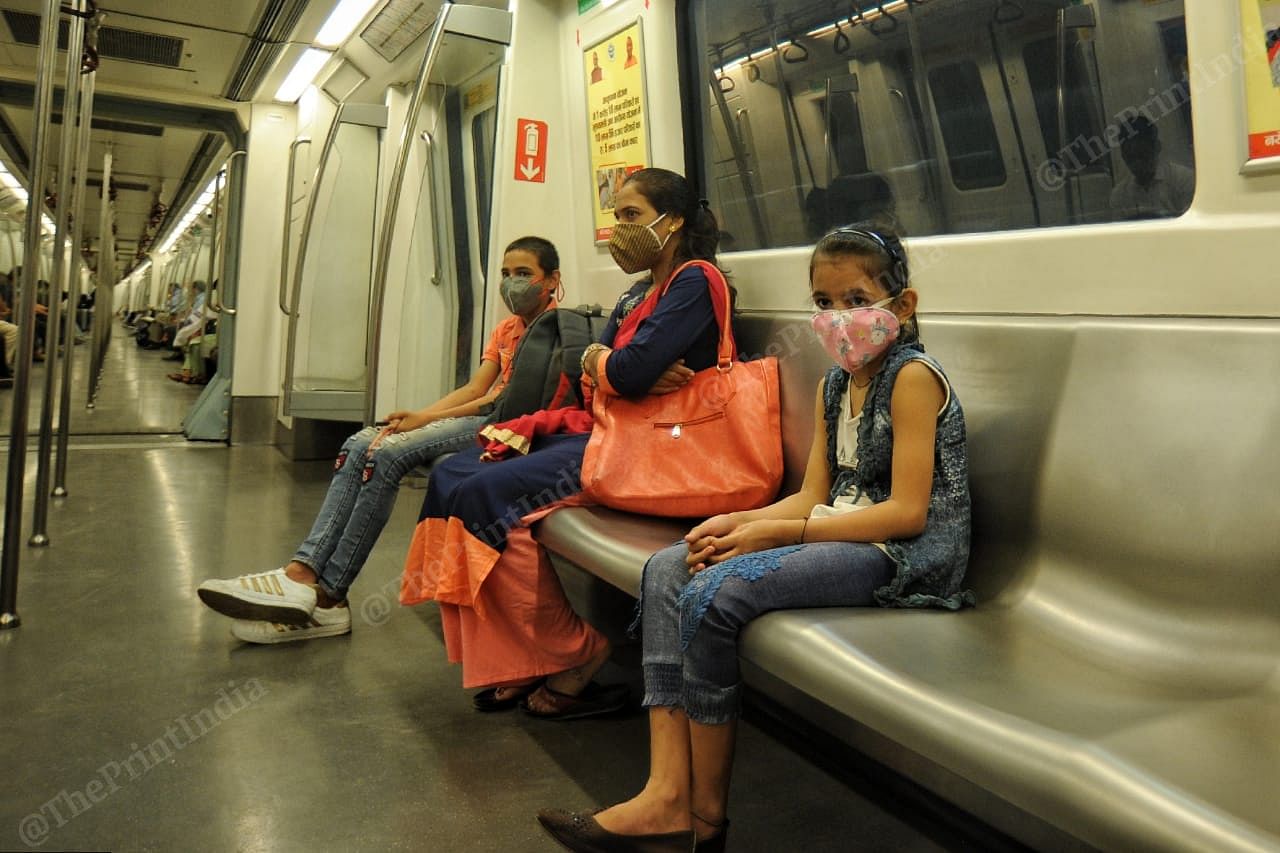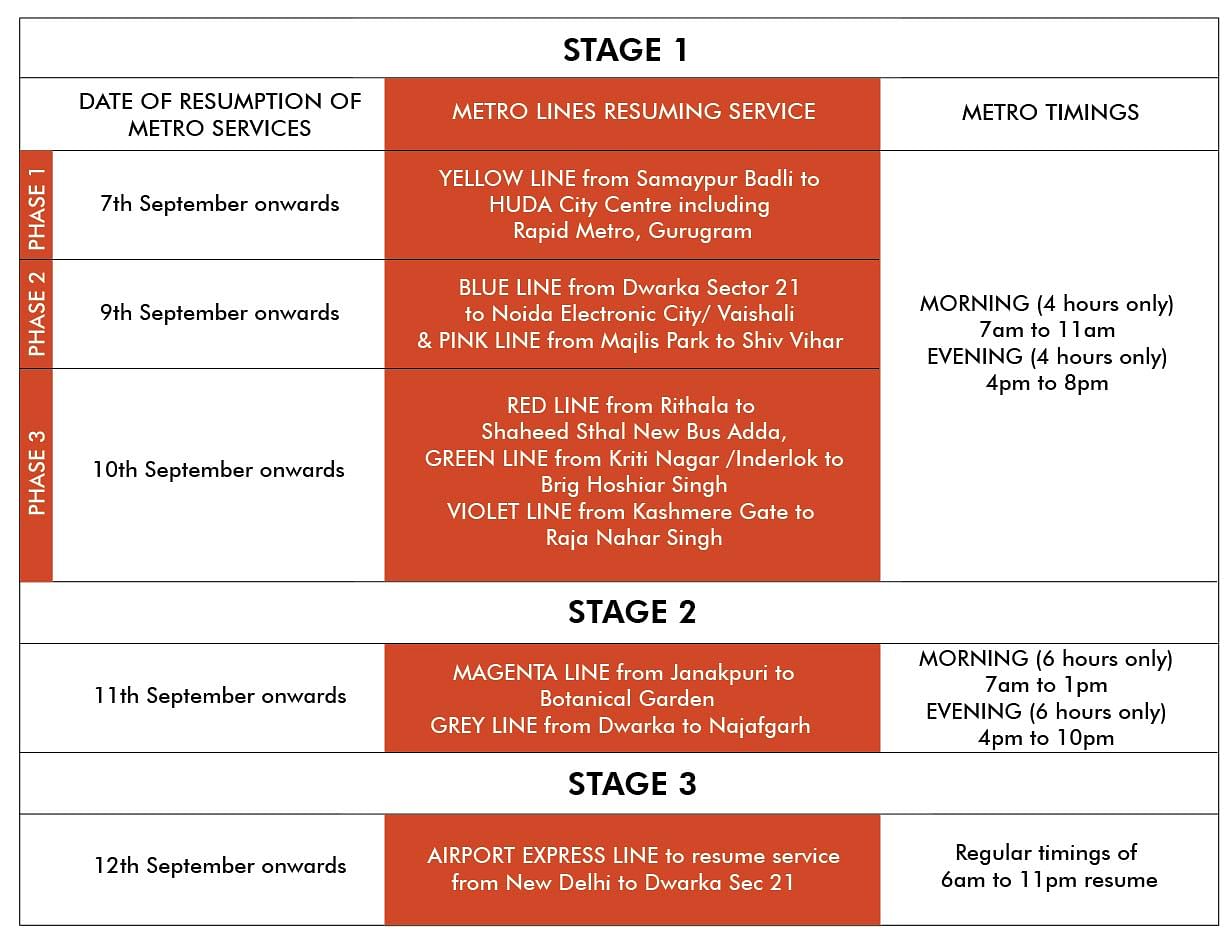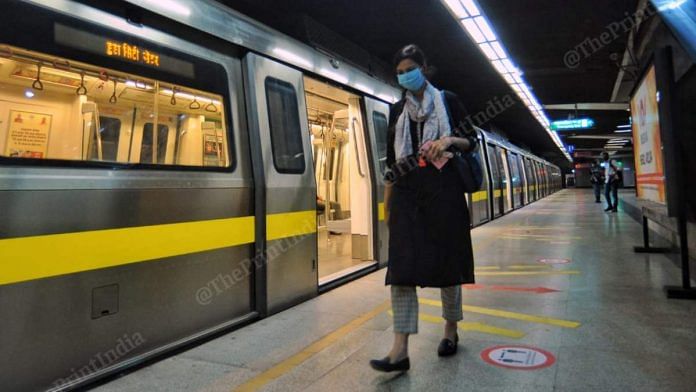New Delhi: After a hiatus of five months, the yellow line of the Delhi Metro opened its gates to passengers Monday, but several changes were introduced in view of the Covid-19 pandemic.
With the bustling crowds missing, the metro service, the national capital’s lifeline, didn’t look the same anymore.
ThePrint travelled from the Huda City Centre station in Haryana’s Gurugram until Central Secretariat in New Delhi to see how services had resumed and if enough precautions were in place.
The Delhi Metro Rail Corporation (DMRC) guidelines state that the metro will function in two shifts until 10 September — from 8 am to 11 am, and then from 4 pm to 8 pm.
DMRC said 7,500 passengers had travelled by the metro from 8 am to 11 am Monday morning.
At 10 am, the Huda City Centre station in Gurugram, which usually records a footfall of over 50,000 on a regular day — was bereft of any passengers barring a few Civil Defence Volunteers and police personnel, who were deployed to ensure people maintain social distance and wear masks.
As one entered the station, they were thermal screened, following which luggage bags were sanitised. Automated sanitiser dispensers were put in place for the use of passengers. These dispensers have been installed at 45 major stations.
The use of cash and tokens was discontinued to ensure minimum contact, and a limited number of entry gates were opened so as to control the incoming and outgoing crowd. Only one gate was open at the Rajiv Chowk Metro station — which sees a footfall of 5-6 lakh people on a daily basis.
As the 11 am metro pulled into the Huda City Centre station, very few people hopped in. Markers were drawn on the platform as well as on seats inside the trains to ensure that people maintain distance.
“I am very glad that the metro has opened. It is far safer than taking a car for sure since the metro is sanitised regularly. The precautions they have taken are ideal. I will only use the metro now,” Rahul, a Class 11 student headed to Sultanpur, told ThePrint.

Also read: Delhi Metro sees few commuters on Day 1 of reopening after lockdown, strict rules in place
Cost-effective metro
Ease of travelling was not advantage commuters enjoyed, but the cost of it as well.
Ajay Goel, who works in the supply sector, expressed his joy about the opening of the metro.
“Before the metro opened, travelling was a headache. Buses and cars cost too much and would also take longer. The metro network is very well connected and going from one place to another is easy,” he said.
“The precautions they have taken are very good. It used to be clean earlier also. It feels very good to be traveling in the metro after so long. No other means of transportation works for me, we don’t get this kind of service anywhere,” he added.
Bharti Chauhan, a lawyer, who was on her way to work, also favours the metro for similar reasons. “Taking a cab to Delhi usually costs me Rs 500-600, but with the metro functioning, I only spend Rs 30 or so,” she told ThePrint.
“Police and other authorities have taken ample measures. I can see that everything has been sanitised very properly and thermal screening also took place. In a cab, it’s a very restricted area and one can never be sure if the driver has sanitised the car or not,” she added.
Soniya, a homemaker who was headed to Chandni Chowk for some work, said, “It seems safe to me. Travelling has become easier for sure, but the restricted time slots are posing a problem. The last train in the morning slot leaves at 11 am but I have to leave from my house earlier to ensure I don’t miss it.”

‘Metro is ideal’
Keeping in mind the several new protocols put in place, including the waiting time of a train at a station being increased from three minutes to six minutes, passengers have been advised to add another 10-15 minutes to their total travel time.
“In the earlier phases of the unlock, there was not much traffic and travelling by road was far easier. But now that everyone has started going to work but the metro wasn’t functioning, even going by car was getting cumbersome. Metro is ideal,” said Soniya.
The timings for the metro will be extended from 7 am to 1 pm and 4 pm to 10 pm on 11 September and from 12 September, the original timings (6 am to 11 pm) will be resumed.

The step comes at a time when India recorded over 90,000 coronavirus cases in the last 24 hours and has now overtaken Brazil to become the second country with the highest number of cases in the world, second only to the US.
Meanwhile, Delhi Chief Minister Arvind Kejriwal expressed his contentment over resumption of the metro services, but asked people to continue taking precautions.
“I am happy that Delhi Metro services resumed today. Metro has made good arrangements. We should not be careless in taking precautions,” he tweeted.
Also read: Delhi Covid surge raises concerns over Metro resumption, but doctors are not too worried






